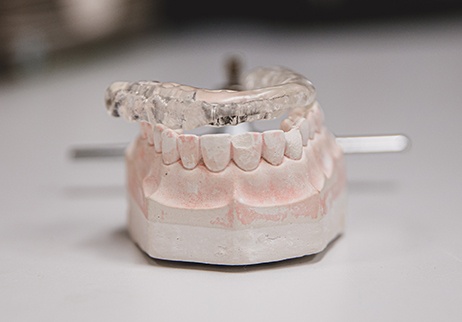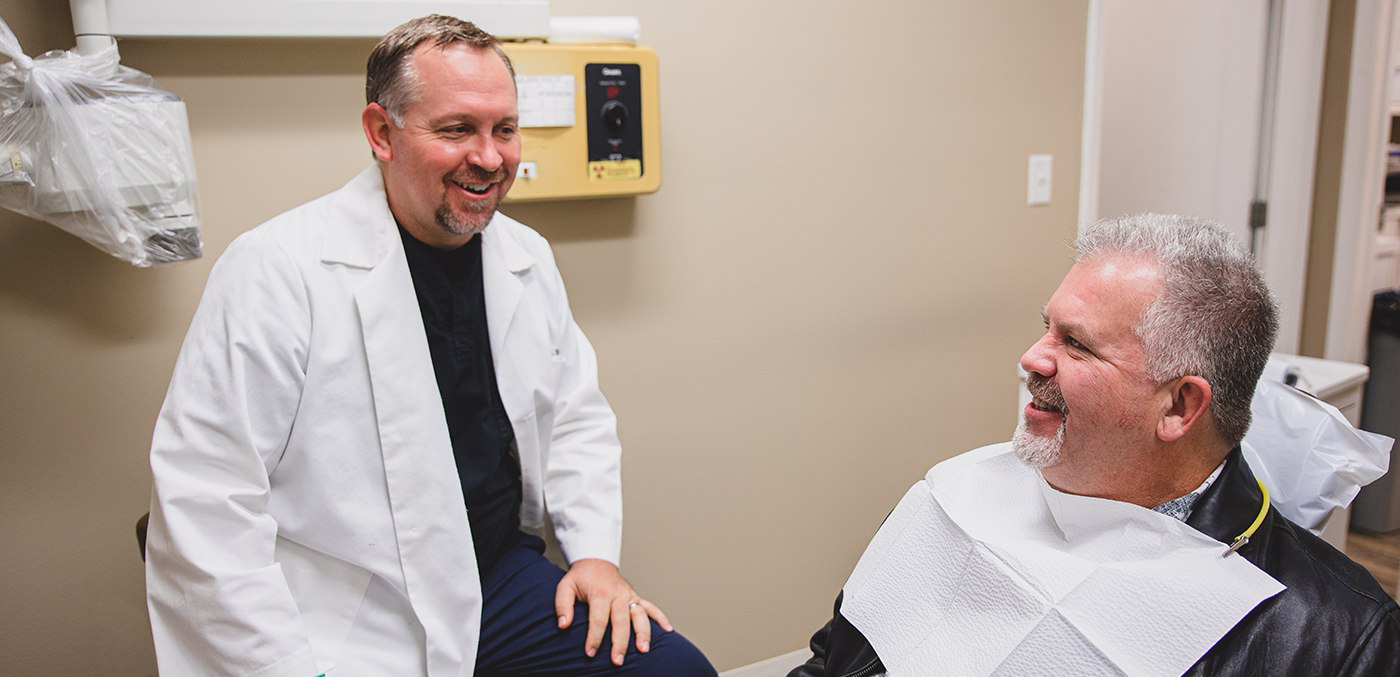TMJ / TMD Therapy – Geneva, OH
No More Jaw Pain & Headaches
If you open and close your mouth, you’ll feel two little hinges move right next to your ears, and these are actually your temporomandibular joint, or TMJ. This is your jaw joint, and like others in the body, it can sometimes develop strain and injury that can lead to a variety of unpleasant symptoms, including jaw pain, stiffness, and chronic headaches. Thankfully, our team is able to treat all kinds of TMJ disorders (TMDs) to help patients get the long-lasting relief they deserve. To learn more about what may be causing your jaw/head pain and how we can make it stop, contact us today for TMJ/TMD therapy in Geneva, OH.
Why Choose Cooper Owens DDS for TMJ / TMD Therapy?
- Advanced Technology Helps Us Find the Source of the Pain
- Custom-Made Mouthguards for Every Patient
- Able to Stop Nighttime Teeth Grinding, aka Bruxism
Diagnosis & Treatment

A TMD can be brought on by a wide variety of factors, with the main ones being daily stress, a misaligned bite, nighttime teeth grinding (bruxism), arthritis, and injury. Using an exam and X-rays, we can determine exactly what is causing a patient’s TMD, and this will guide us toward the appropriate treatment. The goals will be to provide longstanding relief as well as fully restore the proper function of the joint.
Equilibration / Occlusal Adjustments
An equilibration involves adjusting how the teeth come together so the TMJ can reach its natural resting position. A misaligned bite, whether due to crooked or missing teeth, can often prevent the muscles in the jaw joint from ever fully relaxing, causing them to tire, become strained, and create pain. We can rebalance the bite by replacing any missing teeth, aligning crooked teeth, and slightly reshaping certain teeth. Once this is done, any pain should go away on its own.
Occlusal Splints

With an occlusal splint, a patient simply wears a custom-made mouthguard to bed that slightly readjusts the position of the jaw. This places the muscles, ligaments, and tendons of the TMJ into a more natural and restful position, allowing these tissues to relax and heal themselves. A splint can also help stop one of the main sources of TMD, bruxism, protecting the teeth from excess wear and breakage.
Botox for TMJ Therapy

Even though Botox is best known for its ability to remove facial wrinkles, it can also be used for pain relief, and it has been a trusted method for decades. Dr. Duqum can inject Botox into overactive TMJ muscles, which can help stop the persistent pain the patient is experiencing, plus this can allow the muscles to relax so they don’t unconsciously grind or clench the teeth. Most of the time, Botox is able to provide fast and lasting relief while our team works to solve the underlying problem that is causing someone’s TMD.
Also, this treatment can offer a cosmetic boost; it can help reduce the size of enlarged masseter muscles (you can see them on the sides of your jaw as you chew) to create a more defined jawline.

